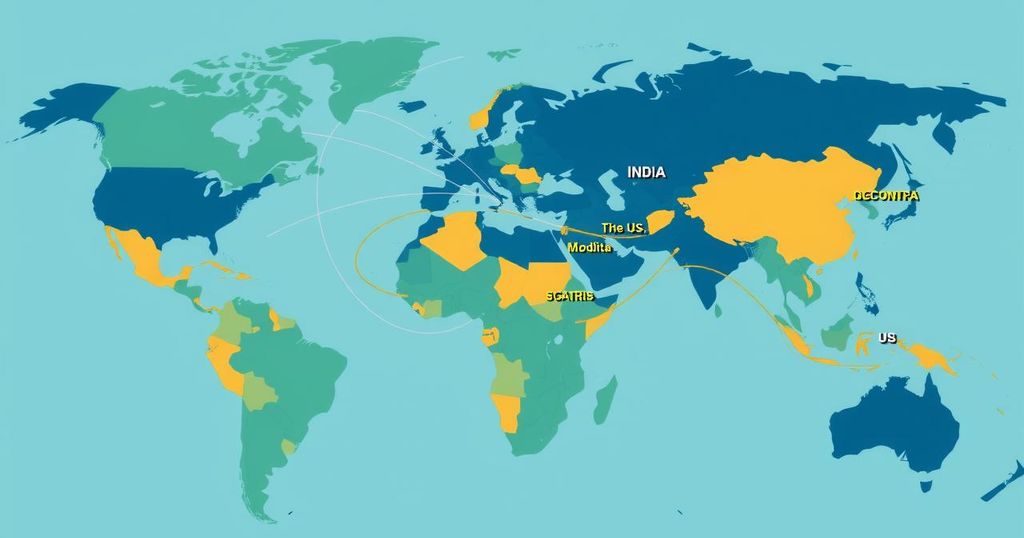Impact of Trump Tariffs on Indian Exports: An Analysis
India, facing a 27 percent tariff on exports to the US, experiences mixed impacts across various sectors. Notable challenges arise for the automotive and electronics industries, while textiles, gems and jewellery, and some agricultural products may benefit relative to higher tariffs imposed on competitors like China, Vietnam, and others. The potential for future trade negotiations may offer some respite.
In 2023, India ranks as the world’s 12th-largest exporter with total exports valued at $441 billion. However, it now faces a significant 27 percent tariff on all exports to the United States. Despite the challenges this poses to domestic exporters, India appears to be in a relatively advantageous position compared to its key competitors, such as China, Vietnam, Bangladesh, and Indonesia, which face higher tariffs ranging from 34 percent to 49 percent.
The automotive sector is particularly affected, as the US has implemented a 25 percent tariff on imported automobiles. Indian automobile exports to the US are minimal, contributing only 0.13 percent and 3 percent of its total automobile exports for passenger and commercial vehicles, respectively. Tata Motors may experience indirect impacts through its luxury segment, particularly Jaguar Land Rover, which derives about 23 percent of its revenue from the US market.
Conversely, India’s textile industry may benefit from the new tariff structure as its rivals confront steeper duties, with Vietnam at 46 percent, Bangladesh at 37 percent, and China at 34 percent. India accounts for 8 percent, or $9.7 billion, of US textile imports, supplying a mix of basic and specialized products.
In the gems and jewellery sector, India is a crucial supplier, constituting 12.99 percent, or $11.58 billion, of total US imports. Competing countries like France and Italy have much smaller shares, solidifying India’s standing despite the potential impact of tariffs.
Indian agricultural exports, such as Basmati and non-Basmati rice, along with buffalo meat and wheat, are subject to the 27 percent tariff. However, India may retain a pricing advantage on processed foods compared to competitors due to tariff structures. Mexico holds an edge due to its lower tariffs and proximity to the US under the USMCA agreement.
In the electronics sector, India exports $14 billion worth of goods to the US. While the 27 percent tariff will increase costs, India maintains a competitive position relative to Vietnam and China, both of which face higher tariffs. Negotiations for a bilateral trade agreement with the US may provide potential relief from these tariffs. Overall, while challenges exist, certain sectors in India might emerge more competitive relative to other countries despite the new barriers.
In summary, although a 27 percent tariff on Indian exports to the US poses challenges, India stands to navigate this landscape more favorably than several key competitors. Sectors like textiles, gems and jewellery, and certain agricultural products may find opportunities amidst rising tariffs, while the automotive and electronics industries will face different levels of impact. Future negotiations between India and the US could potentially mitigate these tariff challenges, keeping Indian exports significant in global trade.
Original Source: www.business-standard.com




Post Comment